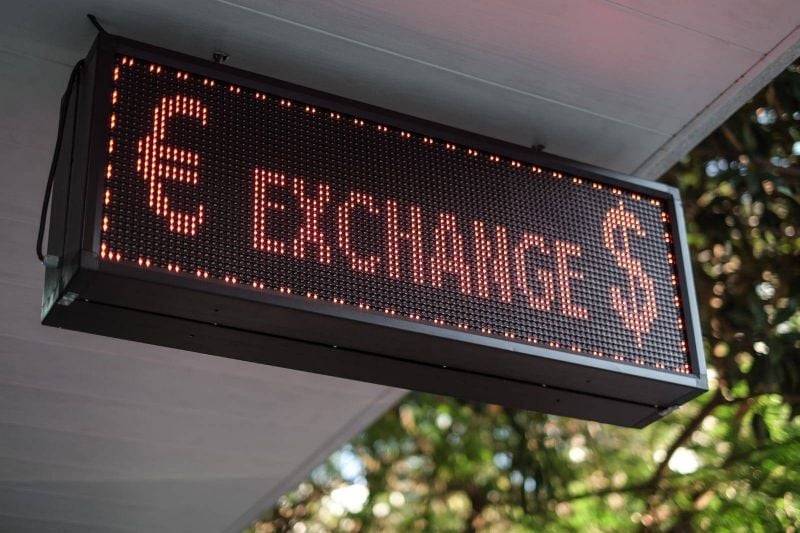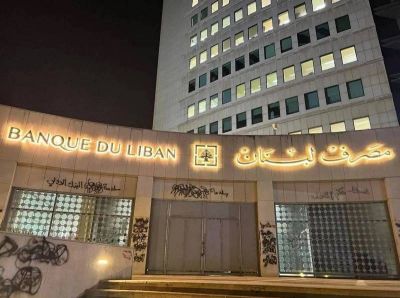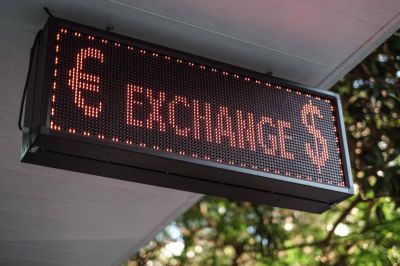
A sign for a currency exchange business in Beirut. (Credit: João Sousa/L'Orient Today)
The central council of Banque du Liban (BDL) is actively gearing up to introduce a new official platform that will broadcast the lira-to-dollar exchange rate.
The Lebanese currency has suffered a staggering 98 percent loss of value on the parallel market since the onset of the financial and economic crisis in 2019.
The primary objective of this new platform is to replace Sayrafa — which BDL launched in 2020 with the aim of establishing itself as the market benchmark, but to no avail. The new platform is also said to be designed to supplant the existing informal websites and applications that currently disseminate exchange rates provided by authorized or illegal agents, such as lirarate.org and Adde dollar.
The operational mechanisms of these platforms, including Sayrafa and others, have never been adequately elucidated by their operators.
Salim Chahine, the central bank’s third deputy governor, told L’Orient-Le Jour that what the Lebanese economy presently requires is a transparent monitoring tool for the market exchange rate. This tool should operate without interference from BDL, except in circumstances stipulated by the Code of Money and Credit.
“BDL is currently preparing the circulars that will organize the operation of this new platform, determining which players will be eligible to feed it with market data and under what conditions,” said Chahine, who was appointed in 2020 at the same time as the other deputy governors.
“This is an ongoing process, which is part of a collective approach involving all the BDL’s vice-governors,” he added, without giving a timetable for the platform’s delivery or any other specific details.
Two companies
Chahine said that two companies were candidates to operate the new platform: Bloomberg LP, an American financial group and economic and financial information agency, and Refinitiv, a global provider of data and infrastructure for the financial markets, which until 2018 was the Financial & Risk arm of the Reuters news agency.
The deputy governor said that these two companies were “recommended” by the International Monetary Fund (IMF).
“The aim is to provide a reliable tool to enable Lebanon to complete its transition to a floating exchange rate regime, as requested by the IMF,” Chahine said.
Indeed, this is one of the prerequisite reforms listed in the Staff-Level Agreement signed in April 2022 between Lebanon and the IMF.
“It is difficult to imagine BDL being able to conduct a monetary policy tailored to the country’s needs without such a tool,” Chahine said.
From the late 1990s until 2019, BDL employed interventions in the market by injecting either dollars or lira to maintain a steady official exchange rate of LL1507.5 to the dollar.
However, the dynamics shifted dramatically with the onset of the financial crisis in the summer of 2019. Over the course of several years characterized by persistent annual balance of payments deficits, BDL progressively curtailed its interventions. Simultaneously, the banks, facing a shortage of dollars themselves, imposed ad hoc restrictions on their customers’ ability to access their foreign currency deposits.
While the actual exchange rate started to decline in 2019, the official rate was upheld for specific operations during that time. As the banking restrictions intensified, various fixed exchange rates were implemented to facilitate certain mechanisms. These mechanisms aimed to accommodate the limitations imposed by the banks, granting depositors the opportunity to withdraw a portion of their funds, albeit subject to restrictive conditions.
In 2020, BDL introduced Sayrafa with the aim of establishing it as a pivotal player in the market. However, the role of this platform was swiftly restricted to disseminating a rate that fluctuated based on unclear criteria, deviating only slightly from the actual rate. In practice, it was only utilized for a narrow set of transactions. Unfortunately, the coexistence of the Sayrafa rate alongside the parallel market rate has fostered arbitrage opportunities and heightened volatility in the national currency, leading to several undesirable consequences.
A recent example highlights the volatility caused by the coexistence of multiple exchange rates. Over the weekend, the market exchange rate, which had remained relatively stable for several weeks, experienced sudden fluctuations of several thousand lira. These fluctuations subsided after rumors emerged regarding the potential suspension of operations at Sayrafa.
According to a banker who spoke on condition of anonymity, the situation was partially attributed to a delay from BDL in validating requests for dollars sold to banks. These dollars were intended to facilitate lira-to-dollar conversions at the Sayrafa rate requested by their customers.
The situation eventually stabilized after BDL issued a press release assuring that operations based on the Sayrafa rate had not been interrupted. It is important to note that these dollars are sourced from the institution’s foreign exchange reserves, which have significantly diminished since the onset of the crisis.
The proliferation of exchange rates, all of which are lower than the parallel market rate, along with the continuation of Sayrafa in its present state, has drawn criticism from the IMF and has not garnered support from the deputy governors.
The vice-governors have been expressing their concerns about this project for several months, emphasizing the need for changes and improvements.
This article was originally published in French in L'Orient-Le Jour. Translation by Sahar Ghoussoub.


